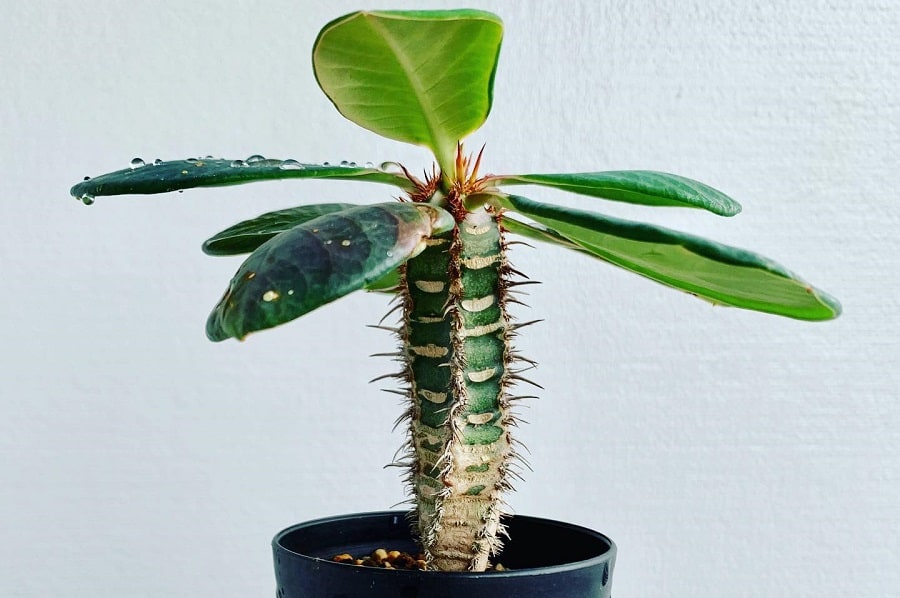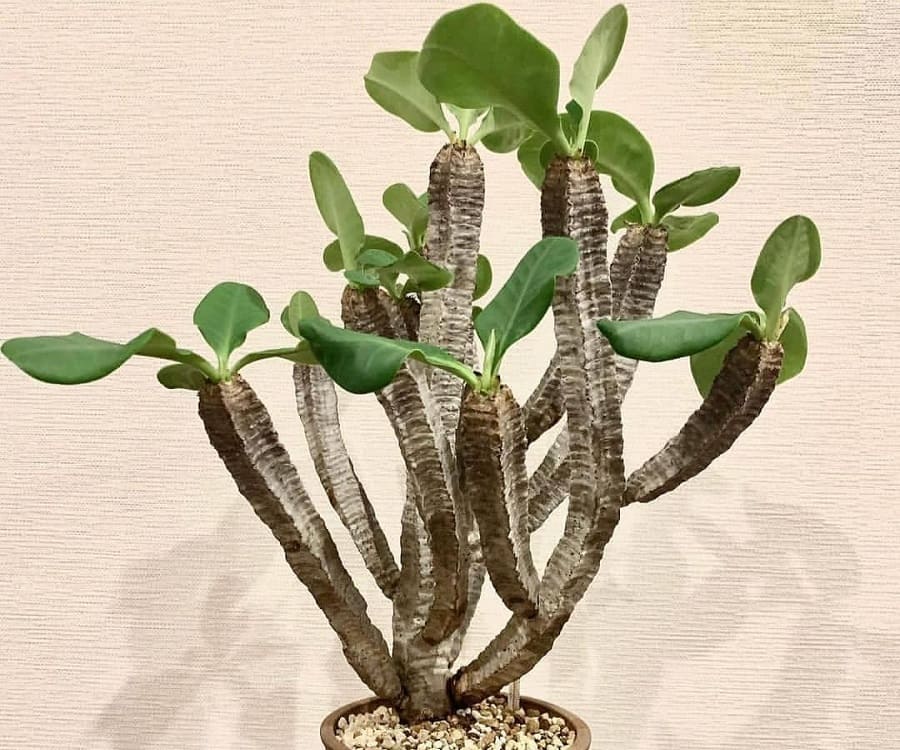Euphorbia neohumbertii: Characteristics and Care
Have you ever laid eyes on a plant so weirdly wonderful, that you couldn’t believe it was real? Let us introduce you to the one and only Euphorbia neohumbertii – a succulent straight out of sci-fi! With its alien-like appearance and vibrant blooms, this quirky Madagascar native is about to become your new obsession.

Contents
About Euphorbia neohumbertii
This funky succulent sports tall spiny stems up to 3 feet high that branch out into an otherworldly crown at the top. The upright, quadrangular stems look like they’ve been carved from green steel wrapped in spiky armor. In winter, the thick leaves wither away, leaving behind badass battle scars.
But the real showstopper arrives in spring when vivid red flowerheads with sunshine yellow tips burst forth. It’s like the plant is celebrating its unique beauty with fireworks! Originating from the rocky, semi-arid landscapes of Madagascar, E. neohumbertii is one tough customer.
Related Post:
200 Types of Euphorbia With Pictures
Euphorbia neohumbertii Care Guide
Light Needs
These sun-worshipping succulents need at least 6 hours of direct light daily to stay looking their spiffy best. Indoors, situate them in a bright, sunny window – south-facing is perfect. Or treat them to an indoor grow light to bask under. Just watch for scorching and provide afternoon shade if needed.
Water Wise
During the spring to fall growing period, allow the top couple inches of soil to dry out before watering again, about once a week. E. neohumbertii handles drought like a champ, so no sweat if you miss a drink now and then. But don’t let it go past crispy dry for too long – a deep monthly soak is better than forgetting it completely. Come winter, cut back to watering only when it starts looking thirsty.

Soil Situation
Like most succulents, E. neohumbertii craves a well-draining potting mix. A blend of half potting soil and half coarse sand amended with perlite or pumice makes the perfect fast-draining base. Or just grab a quality commercial succulent mix to make life easy.
Fertilizing
A diluted liquid fertilizer during the growing season gives this succulent a little nutrient boost. Choose an organic or balanced fertilizer designed for succulents. Feed more frequently if growing in a container versus in the ground. Yellow leaves signal it’s time for a meal.
Temperature & Humidity
When it comes to climate, E. neohumbertii is a pretty easygoing houseguest. It vibes with average to dry indoor humidity and temps between 70-80°F during the day and 55-65°F at night. Easy peasy!

Potential Pests & Problems
Keep an eye out for spider mites and mealybugs trying to crash the party on your prized plant pal. These pesky critters can proliferate quickly if left unchecked. At the first sign, treat with an insecticidal soap or neem oil.
Pruning Pointers
With its architectural shape, you’ll rarely need to prune E. neohumbertii beyond removing any unsightly dead stems or branches. Use clean, sharp pruners and let wounds callous over before returning the plant to its spot.
Potting & Repotting
These slow-growing succulents stay happy for several years when planted in an appropriately sized container with the proper well-draining soil mix. When roots start peeking through the drainage holes, it’s time to upsize to a new slightly larger pot.
Euphorbia neohumbertii Propagation Guide
Reproducing more E. neohumbertii is a fun adventure you can tackle two ways:
Seeds:
- Use a half soilless seed-starting mix, half coarse sand blend
- Sow seeds shallowly and provide bottom heat to encourage germination
- Be patient – seeds can take 2-6 months to sprout
Stem Cuttings:
- Using a clean, sharp blade, snip off stem segments from branching points
- Allow cuttings to callous over for a few days before replanting in fresh potting mix
- Keep soil barely moist until new growth emerges in 4-6 weeks
Enjoy this far-out fauna from the faraway island of Madagascar! Euphorbia neohumbertii’s eccentric looks and low maintenance make it a stellar star for succulent lovers. With a few simple tips, you’ll have this alien ambassador thriving in your own space colony.
